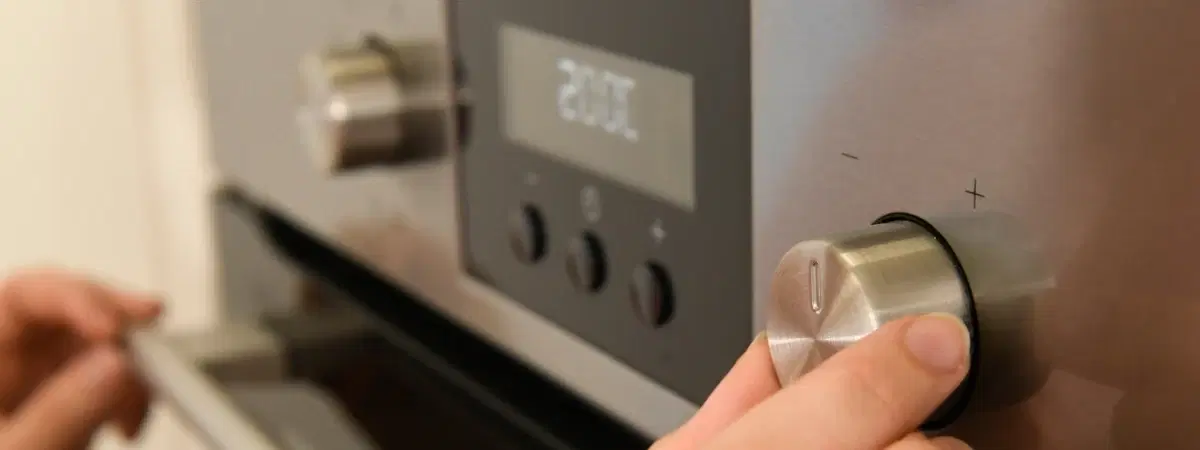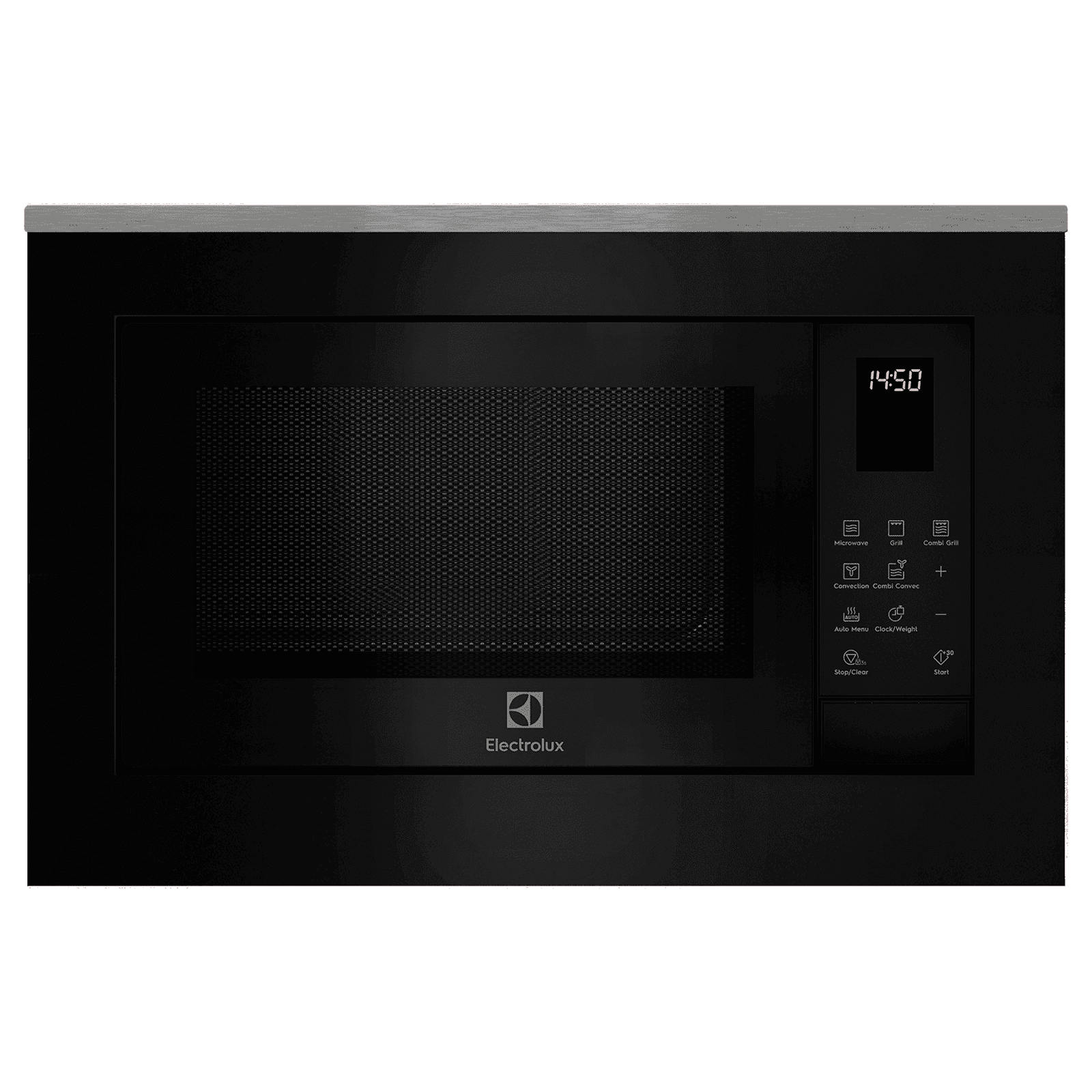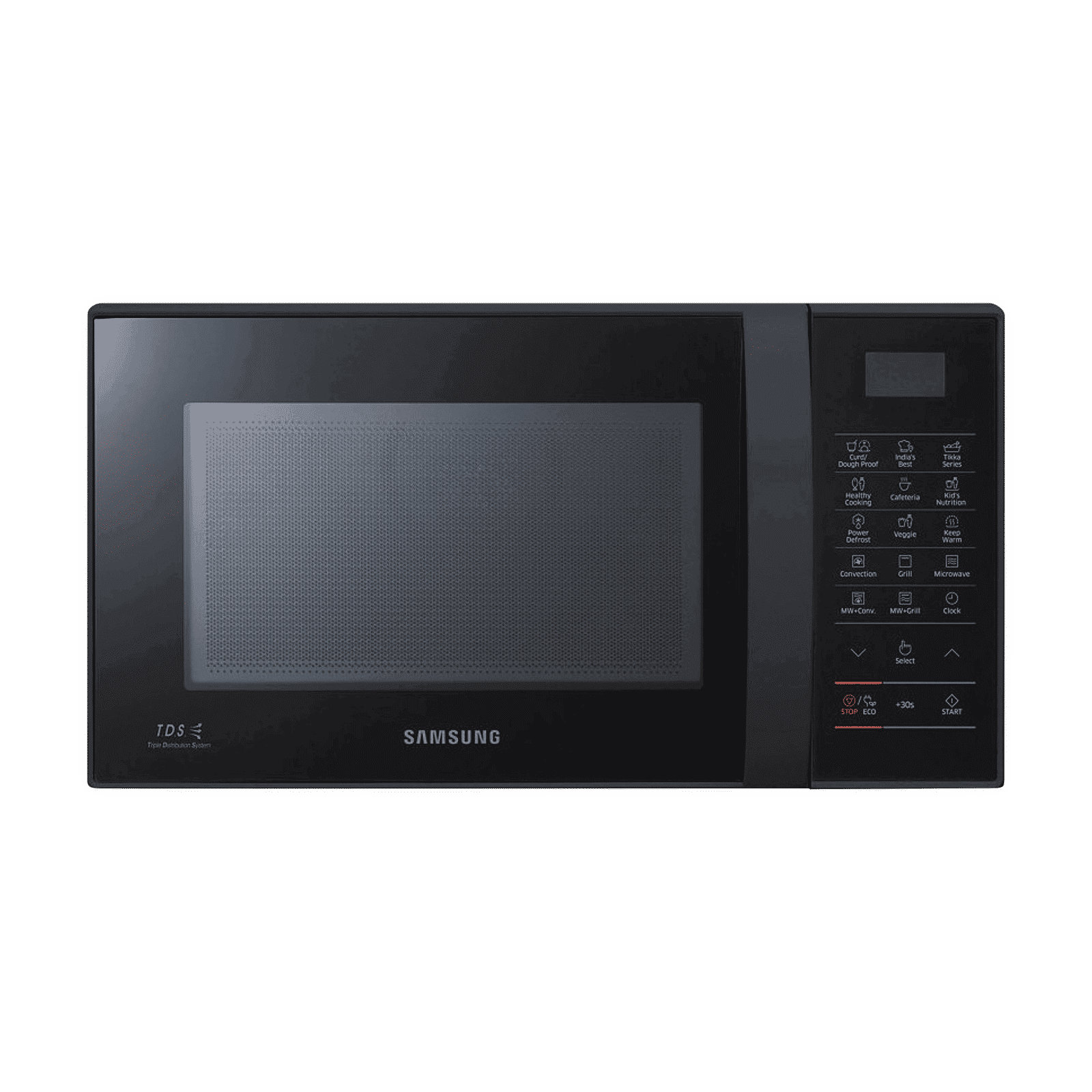
Home Appliances
•03 min read

Buy IFB 30FRC2 30L Convection Microwave Oven with 101 Autocook Menus (Black Floral) online at best prices from Croma. Check product details, reviews & more. Shop now!
Imagine heating your food in seconds without flames or a stovetop—just the magic of invisible waves. Microwave ovens are a kitchen staple that uses microwave electromagnetic waves to reheat, cook, and defrost food quickly. In this blog post, we explore how a microwave oven works, discussing its mechanism, the science behind microwave heating, and the range of benefits it brings to modern cooking.
A microwave oven is a household appliance that uses microwave energy transfer for cooking and reheating food. It works on the principle that certain electromagnetic waves, specifically those in the microwave spectrum, can heat food by agitating water molecules. This efficient process makes it a popular choice for busy households, young professionals, families, and tech enthusiasts alike.
Magnetron: The heart of the microwave oven, the magnetron, is responsible for generating the microwaves. It converts electrical energy into microwave radiation that initiates the heating process.
Waveguide: After the waves are generated, the waveguide channels them into the main cavity of the oven, ensuring even distribution through the microwave oven mechanism.
Turntable and Cavity: The turntable rotates food within the cavity so that it is exposed uniformly to the microwaves. This feature is key to achieving even heating and preventing cold spots.
Microwave ovens work by using electromagnetic radiation to heat food. At the centre of this process is dielectric heating—a method in which water molecules resonate at a specific frequency. The magnetron produces microwave electromagnetic waves at 2.45 GHz, a frequency chosen for its effectiveness in agitating water molecules. This phenomenon exemplifies the working principle of microwave energy transfer.

Buy Electrolux UltimateTaste 700 25L Built-in Microwave Oven with CombiGrill Technology (EMSB25XC, Black) online at best prices from Croma. Check product details, reviews & more. Shop now!
The process of heating food in a microwave is both direct and efficient. When food is exposed to microwaves, the energy is absorbed by the water molecules within. These molecules begin to vibrate rapidly, generating heat from within. This is the core basis of microwave cooking science. Since the energy is delivered directly to the water molecules, the heating process is faster compared to conventional methods which typically heat from the outside inward.
Insight Corner: "Did You Know? Microwave ovens heat food by targeting water molecules at a frequency of 2.45 GHz. This frequency causes the molecules to vibrate, generating heat from within—making it faster than conventional cooking methods."
Electromagnetic waves are energy waves that can travel through the vacuum of space. In the context of microwave ovens, these waves are used to transfer energy directly to food. Unlike visible light or infrared, microwaves penetrate food and create internal heat by inducing molecular vibration.
Microwave radiation is safe when used properly. The microwave radiation process is designed in such a way that the waves are contained within the cooking cavity. This design, along with strict safety standards, ensures that the appliance does not make food radioactive. It is always important to use microwave-safe containers to avoid any potential risk and ensure optimal performance.
Microwave ovens are versatile. They are invaluable for reheating leftovers quickly, defrosting frozen foods, cooking a variety of dishes, and even sterilising certain kitchen items. With the aid of microwave technology explained above, quick and efficient meals become an achievable reality for everyone from students to families.
The advantages of using a microwave oven are vast. Speed is a significant benefit, as these appliances can heat and cook food in a fraction of the time taken by traditional ovens. Efficiency is another key feature – energy is transferred directly to the food, reducing wastage related to heating cookware. Additionally, the convenience of microwave ovens translates to minimal preparation and cleanup, which is perfect for busy lifestyles.

Buy SAMSUNG 21L Convection Microwave Oven with Advanced Fermentation Technology (CE76JD-B1/XTL, Black) online at best prices from Croma. Check product details, reviews & more. Shop now!
A microwave oven works by generating electromagnetic waves using a magnetron. These waves are directed by a waveguide into the oven cavity, where they are absorbed by water molecules in the food, causing them to vibrate and generate heat.
Microwave ovens operate on the physics of dielectric heating. Electromagnetic waves at a frequency of 2.45 GHz excite the water molecules in food, causing them to vibrate and produce heat efficiently.
The working principle of microwave ovens for Class 12 involves dielectric heating. Water molecules in food absorb microwave energy, vibrate, and transfer heat to adjacent molecules, cooking the food from within.
Some noted disadvantages are uneven heating in certain conditions, the inability to brown food, and the requirement for microwave-safe containers. Improper use may also result in safety concerns.
Microwaves cook food by transferring energy directly to water molecules, causing them to vibrate intensely. This vibration generates heat, which then cooks the food effectively and quickly.
Microwave ovens stand as a marvel of modern technology, relying on the principles of microwave electromagnetic waves and energy transfer for rapid cooking and reheating. By understanding the microwave radiation process and the function of microwave ovens in everyday life, we appreciate the blend of convenience, efficiency, and innovation they offer. Whether you're defrosting your dinner or preparing a quick snack, the microwave heating process not only saves time but also supports your busy lifestyle. With perks like NeuCoin rewards available on Tata Neu, users can enjoy additional benefits with every purchase, making smart shopping a rewarding experience.